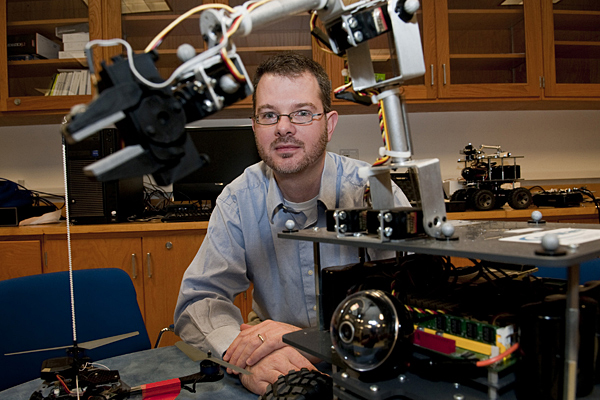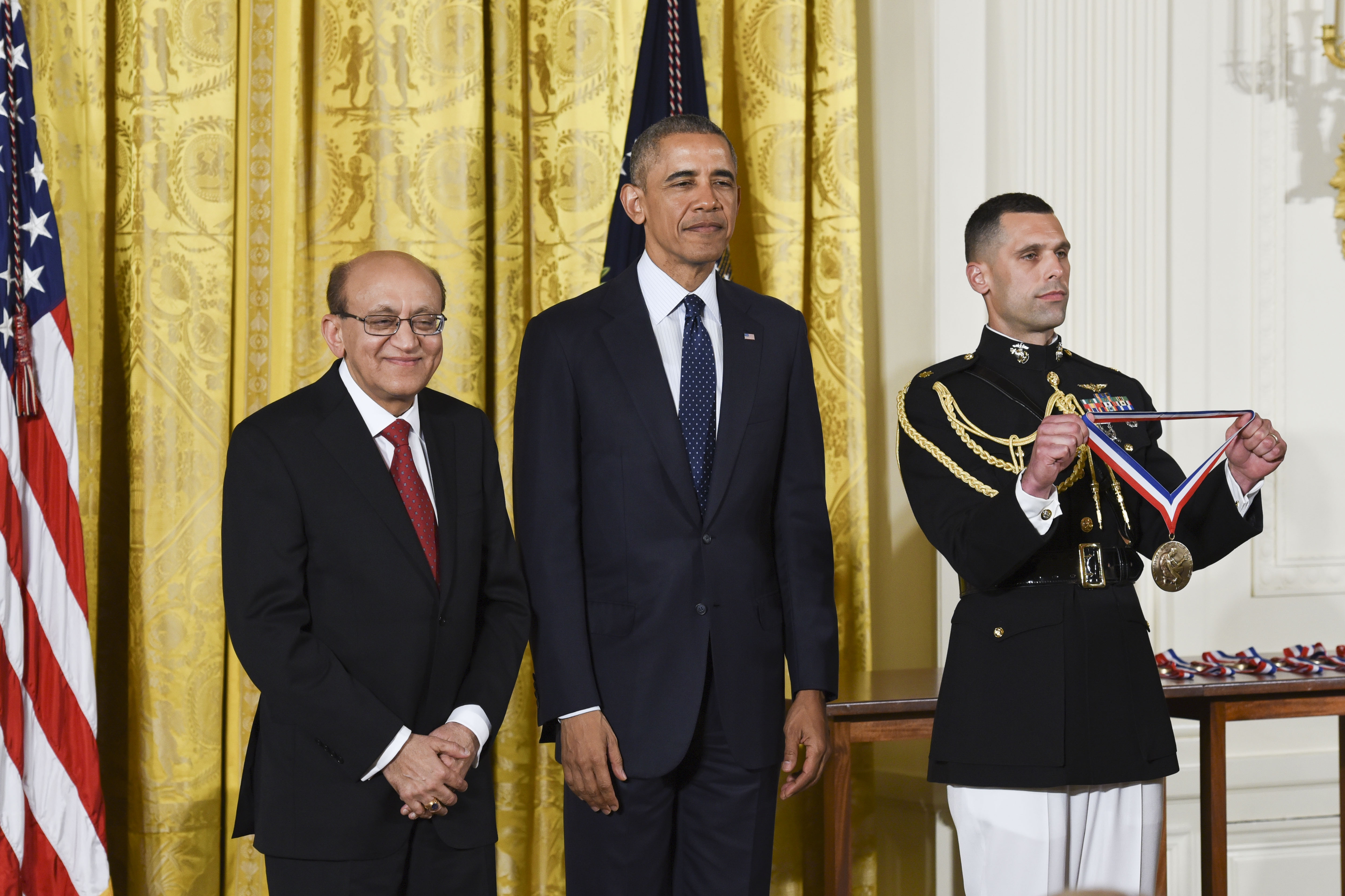
Best journal paper
Neural networks research led by UD's Tanner wins outstanding paper award
1:25 p.m., Jan. 11, 2012--A paper co-authored by Herbert Tanner, assistant professor of mechanical engineering at the University of Delaware, has been voted the 2011 Outstanding Paper for the International Journal of Intelligent Computing and Cybernetics (IJICC).
The invited paper documents work done by Tanner and two of his students on the design of inexpensive, efficient spatially distributed cellular neural networks (CNN).
Honors Stories
National Medal of Science
Warren Award
Neural networks have been used in classification of shapes and patterns for decades, said Tanner. Mathematical algorithms enable the systems to identify predetermined objects, shapes or patterns in a given environment. The ultimate goal is to enable machines to automatically pick out patterns in the data collected by sensors, suggesting the existence of an object or physical process that is obscured.
“This type of neural network is typically formed in a grid fashion with one neuron connected only to its nearest neighbors. The neurons become interdependent, exchanging information and weighing inputs from neighbors, in order to form a consensus-based decision,” explained Tanner. In an implementation where the neural network is situated on a single processor, a failure in that processor compromises the whole system.
Tanner’s team offers a new approach to designing spatially distributed networks – where information is stored over a group of systems that are part of a network, instead of just one system. The challenge with such an approach is that a large amount of information may have to be exchanged between the spatially separated network components.
To overcome this obstacle, the team developed a neural network that functions with minimal information exchange between the components positioned in physically different computer processors. The goal, explained Tanner, was to create a distributed network that performs on par with full connectivity networks, while avoiding a single point of failure. The novelty, he said, lies in combining optimization techniques that trade-off network performance for communication overhead.
To test their network, the group developed an experimental test-bed with mobile robots capable of recognizing noisy, variable shapes on the laboratory floor and what they learned was encouraging.
“We learned that it is possible to selectively sever links between neurons of a CNN without significantly affecting its ability to recall the patterns engraved or hampering the system’s overall performance,” said the paper’s lead author Varsha Bhambhani, a mechanical engineering graduate student studying robotics, optimization algorithm design and control design. Luis Valbuena Reyes, a UD graduate student specializing in mobile sensor networks, cooperative robotics and hybrid systems, also contributed to the paper.
Tanner hopes to use their results in an interdisciplinary research project with Art Trembanis, an assistant professor in the Department of Geological Sciences. The two professors have exchanged ideas on employing spatially distributed neural networks to identify structures along the ocean floor, such as sunken ships or subway cars used as artificial reef environments, and maybe even to count clam populations.
Tanner’s work is supported by a grant from the National Science Foundation. Other anticipated applications for the work range from homeland security, to emergency response, to scientific exploration.
Article by Karen B. Roberts
Photo by Doug Baker








